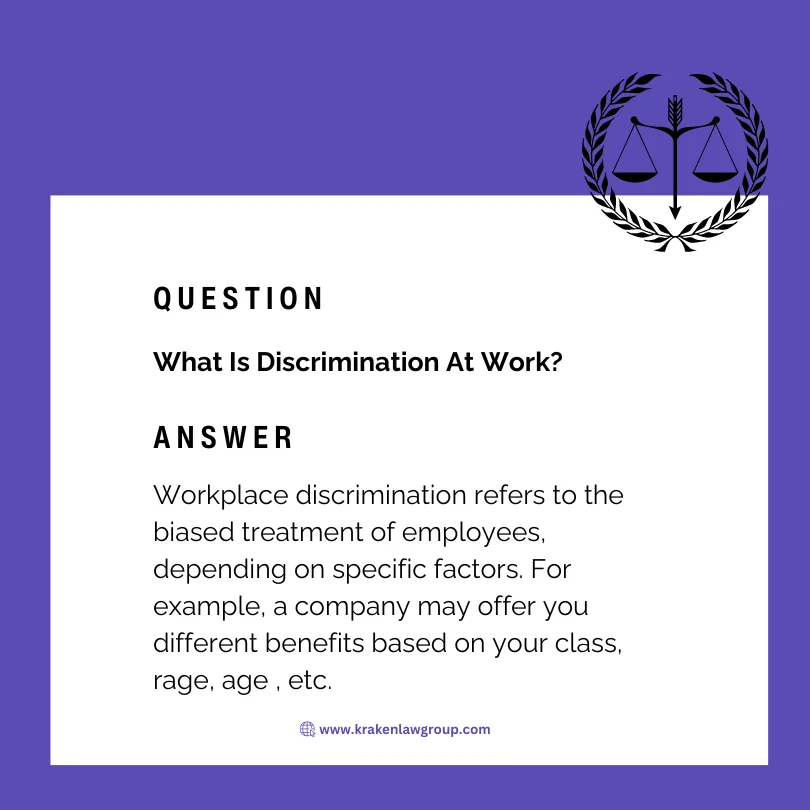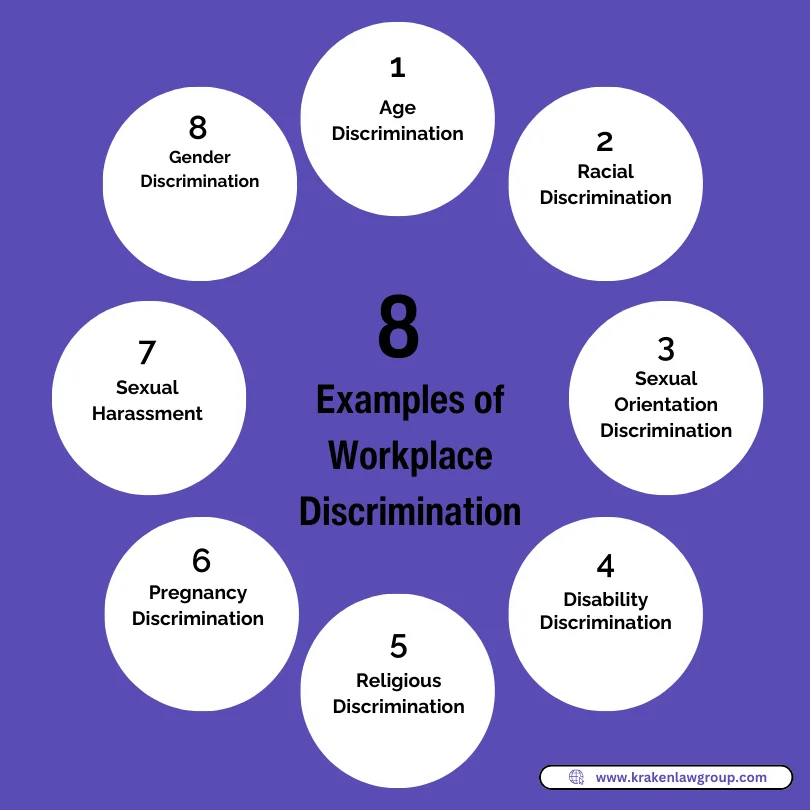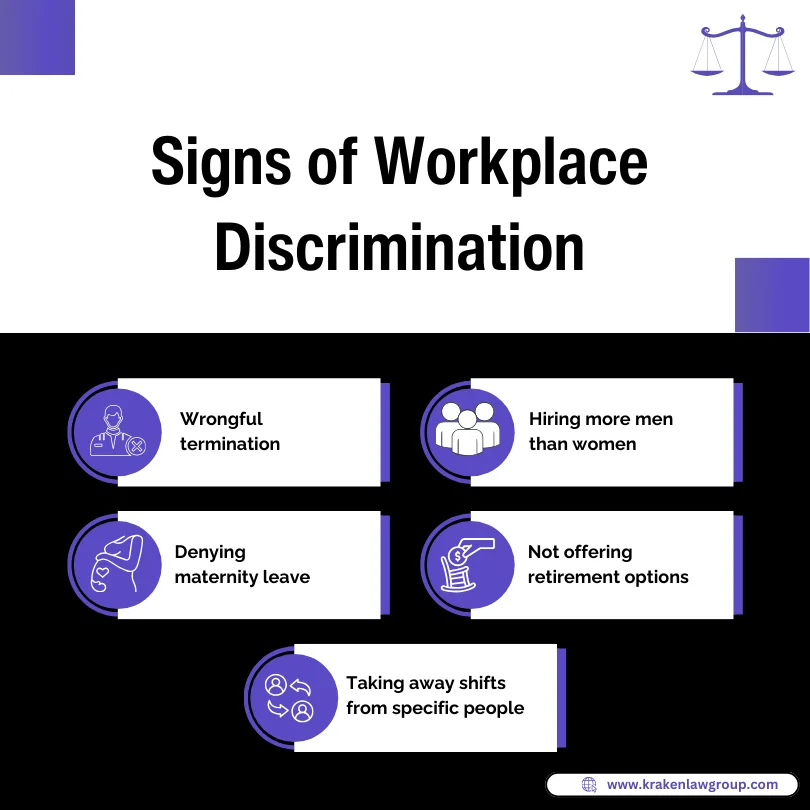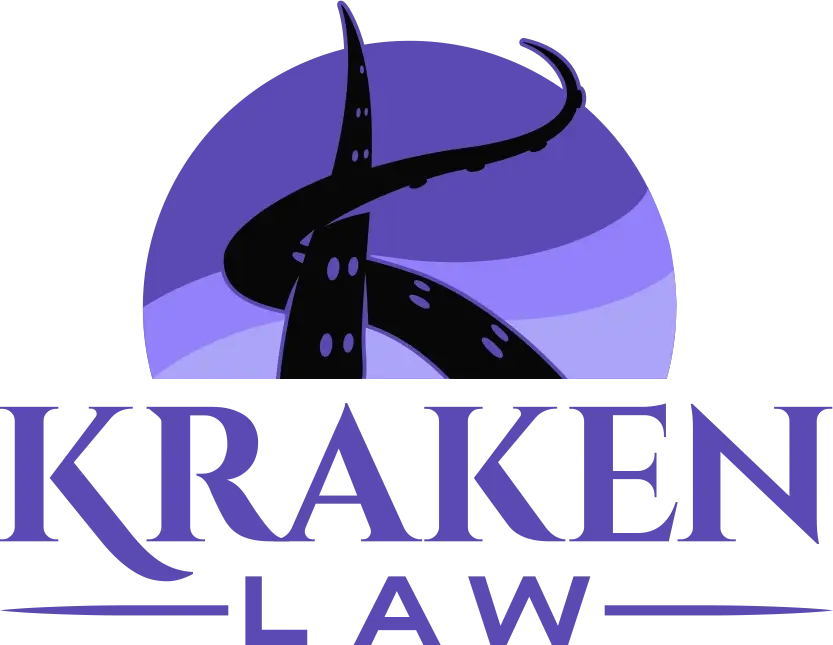Workplace discrimination is illegal, but still many companies in the US engage in it. There are about 2,873 discrimination charges in each state of the US every year.
This average figure has been rising for years due to increasing levels of workplace discrimination. If you want to learn more about it, you don’t have to go any further.
Let’s look at the top examples of workplace discrimination to help you understand better.
What Is Discrimination At Work?

Workplace discrimination refers to the biased treatment of employees, depending on specific factors. For example, a company may offer you different benefits based on your:
- Class
- Race
- Age
- Gender
- Sexual orientation
This discrimination can be positive for some people because they can achieve various benefits such as a higher salary. However, it is also negative simultaneously for other groups of employees.
That is because when one employee is favored for benefits, the other workers may suffer losses such as salary cuts. In the US, workplace discrimination is illegal.
There are various laws to protect workers from different examples of workplace discrimination. You may even hire a lawyer to help you fight a case against your company for unfair treatment.
Top 8 Examples Of Workplace Discrimination

Discrimination at work can be in different forms due to various factors. Let’s look at the top examples of workplace discrimination:
1. Age Discrimination
Age discrimination is one of the common examples of workplace discrimination. Companies may prefer to hire people from specific age groups to enjoy better productivity and efficiency even if the person is less qualified than an older applicant.
Some places also engage in age discrimination by firing older staff more frequently than younger workers. The company may give reasons such as budget cuts to justify the termination of workers.
There may also be discrimination when a company promotes its workers. For example, you may have been more qualified and working for the business for a decade. Despite that, the company may promote a younger employee over you due to age discrimination.
To protect workers from this discrimination, the Age Discrimination Act has been put in place in the US. This law prevents companies from discriminating against employees and new applicants over the age of 40.
It protects people on an age basis during:
- Hiring
- Termination
- Contract conditions
- Employment benefits
However, this doesn’t mean that the age discrimination rate is zero in the US. Many companies still engage in this activity discretely and treat their employees differently.
Workers who face this type of workplace discrimination can file a lawsuit against their employer.
2. Racism
Racism is common not only in corporate industries but also in our society. Even more than 1/3rd of discrimination charges that EEOC receives are of race discrimination.
The treatment of employees based on race is significantly different than other examples of workplace discrimination. That is because a specific group of people are put at a disadvantage. For example, your company may not train you and your other black colleagues due to racism.
Some companies also pass a specific group of workers for promotions or hiring. This is regardless of their qualification and skills. Another common example of race discrimination is unlawful termination.
Your company may call your performance poor or behavior unethical when firing you. The primary law to protect people from racial workplace discrimination in the US is the Civil Rights Act.
Despite that, many workplaces still engage in this discrimination. A manager may not hire a new applicant due to their skin color. Some companies also engage in this workplace discrimination by hiring only US citizens.
Sometimes companies also fire their employees based on who they are married to. For example, you may receive your termination letter if your racist employer finds out you’re married to an African American.
3. Sexual Orientation
When someone treats a person differently due to their sexual orientation, it comes under discrimination. They may also treat you unlawfully based on your interests. The worst part of workplace discrimination is that it can have serious effects on a person’s mental health.
One of the most common examples of workplace discrimination under sexual orientation is not hiring transgenders. Many companies in the US and other parts of the world avoid hiring employees with a transgender status.
This is regardless of the skills and education of that employee. Meanwhile, companies that hire people of diverse sexual orientations may be discriminated against in other ways.
For example, they may not promote people of specific sexual orientation groups. People in LGTBQIA+ communities suffer the most under this discrimination category.
Even the employees at a specific company may treat you differently after learning about your sexual orientation. Team members may not invite you to dinners or leaders may assign you petty tasks not worthy of your employment status.
There are different laws to prevent people from sexual orientation discrimination. For example, the Equal Pay Act can help people of different groups enjoy the same pay.
Of course, not all companies enforce strict rules about discrimination under specific categories. Hiring a lawyer in such cases can help you fight against sexual orientation discrimination at your workplace.
4. Disability Discrimination
Disability discrimination is one of the most common forms of workplace discrimination. Different types of disabilities can affect workers. You may get into an accident that can lead to lower body paralysis.
Some people are also born with special disorders such as autism. Companies usually treat employees with such conditions differently. For example, most workplaces don’t hire people on the spectrum.
The few companies that do hire people with special disabilities may discriminate by offering them lower pay. They may also not consider those workers for promotions despite their efficient performance and high skills.
Workplaces that also fail to offer facilities to employees with disabilities engage in discrimination. This is especially true if the local and federal authorities require companies to offer specific facilities.
For example, you may not have ramped surfaces at the entrance of your workplace for people who use wheelchairs. Sometimes recruiters also discriminate based on disabled family workers.
You may have a child with special needs due to conditions such as autism or Down’s syndrome. A recruiter may not hire you after learning about your child because employers may believe you won’t be able to manage work with your kid’s needs.
Such type of cases also come under disability discrimination in the workplace.
5. Religious Discrimination
There are many different religions in the world such as:
- Christianity
- Judaism
- Islam
- Hinduism
Some people are atheists and don’t believe in God. Workplace discrimination can occur in different companies due to varying beliefs. For example, many places in the US don’t hire Muslim workers.
Many companies consider people who follow Islam to be terrorists and may not hire a qualified worker on a religion basis. Some companies also show bias against Hindu and Jewish employees.
These workplaces may not offer equal salaries due to religious differences. They may also not allow people of specific religions to follow their practices. For instance, female Muslim workers may not be allowed to wear a “hijab” to their workplace.
Some Christian employees also suffer from discrimination in the workplace. These workers may be told to remove their chains with crosses due to specific company policies.
An employer may also not allow people to wear specific dresses due to religious discrimination. They may use excuses such as company conduct and dress code policies to prevent people from wearing comfortable clothing.
This is why different laws require companies to accommodate workers with specific spiritual beliefs. For example, some employees may require space at the office for praying daily during working hours.
A company that fails to fulfill such needs is said to be engaging in religious discrimination.
6. Pregnancy Discrimination
A common form of workplace discrimination that most females experience is pregnancy discrimination. US laws require companies to treat pregnancy as a non-permanent illness. This means that your employer should treat you as they would if you had a temporary illness.
If a company treats you with bias as if your condition was permanent, they engage in pregnancy discrimination in the workplace. Some places terminate pregnant employees once they go on maternity leave.
Specific companies may also not hire you if you’re pregnant because they may not want to accommodate you through maternity leave later. Some workplaces also offer lower pay to pregnant women than non-pregnant female workers.
Such discrimination has been common in the US since the 20th century. This is why the Pregnancy Discrimination Act was brought into being in 1978.
The primary purpose of this law is to protect pregnant women from unfair practices such as:
- Wrongful termination
- Denial of promotions
Companies may also refuse to offer accommodations to pregnant workers as required by US laws. For example, a recruiter may tell you that they don’t offer maternity leave. Such statements are made to discourage the person from taking the job even if an offer is made.
7. Sexual Harassment
Sexual harassment is a form of sex discrimination that violates civil rights laws in the US. It involves:
- Unwelcoming sexual advances
- Requests for sexual favors
- Verbal or physical harassment of a sexual nature in the workplace
Both men and women can be victims, but the majority of cases involve women being harassed by men in authority at their workplaces.
Despite laws like Title VII of the Civil Rights Act prohibiting it, sexual harassment remains widespread and underreported in American workplaces.
Victims often face retaliation for reporting incidents. Movements like #MeToo have drawn more public attention to the issue in recent years. Still, stronger policies, better training, and cultural change are needed to provide equal opportunities free from harassment.
Employers have a responsibility to establish clear procedures for preventing and addressing sexual misconduct. More support is also necessary for victims to safely report incidents without fear of negative consequences to their careers or educations.
Many companies also discriminate against employees if they file sexual harassment complaints to HR. This is why, many people fear of reporting the crime due to a lack of support.
Ongoing efforts to reduce tolerance for sexual harassment and gender-based discrimination continue, but there is still substantial progress needed to ensure safe and respectful environments for all.
8. Gender Discrimination
Another type of workplace discrimination that is common in the US is gender discrimination. Many companies offer male employees greater benefits than female employees.
For example, men at your workplace may receive more pay than women in the same position. Your company may also promote male workers more frequently than female employees.
Some companies also offer greater bonuses to specific employees due to their gender. This is why it is important to fight against such discrimination in the workplace by hiring a lawyer.
Many workplaces also engage in gender discrimination when hiring new workers. For example, recruiters may hire more men than women even if the latter has more qualifications.
This type of discrimination is often combined with sexual orientation discrimination. For example, a recruiter may ask you about your sexual orientation in an interview especially if you’re a woman.
Another form of gender discrimination is not hiring women with kids. This means the company may be discriminating based on your children and gender.
People believe that females with kids have greater responsibilities at home. So they may not be up for the work efficiency their company requires. However, this is not a justification because men with kids don’t experience the same denial of jobs.
Identifying Discrimination In The Workplace

Identifying workplace discrimination is easy if you know different signs. For example, a manager may make inappropriate comments about your physical characteristics such as skin color.
Other things that can help you identify discrimination in the workplace are:
- Taking away shifts from specific groups of people
- Wrongful termination
- Denying a promotion due to personal attributes
- Preferring a worker with lower qualifications and performance for promotions
- Hiring more men than women
- Denying maternity leave
- Not offering retirement options to older employees
FAQs
What Is Employee Discrimination?
Employee discrimination is when a company shows bias against specific workers. They may treat them unfairly due to their physical appearance, sexual preferences, gender, and more.
How Do You Deal With Discrimination In The Workplace?
You can deal with discrimination in the workplace by consulting a lawyer for filing a case. An official complaint against your company may help you receive a proper apology and bring about reforms in the workplace.
What Is The Reason For Discrimination In The Workplace?
Most people engage in workplace discrimination due to their personal beliefs. Some companies perform gender discrimination because they believe men work more efficiently than women. Such things are not necessarily true, but workplaces use them to show bias.
Contact An Attorney To Sue Employer For Discrimination
These are the top eight examples of workplace discrimination. You may have experienced unfair treatment in the past or may be experiencing it currently.
Whatever the case, consulting an expert lawyer can help you understand how to deal with workplace discrimination.
So phone us today to get in touch with our attorneys and start your workplace discrimination case in Florida.


